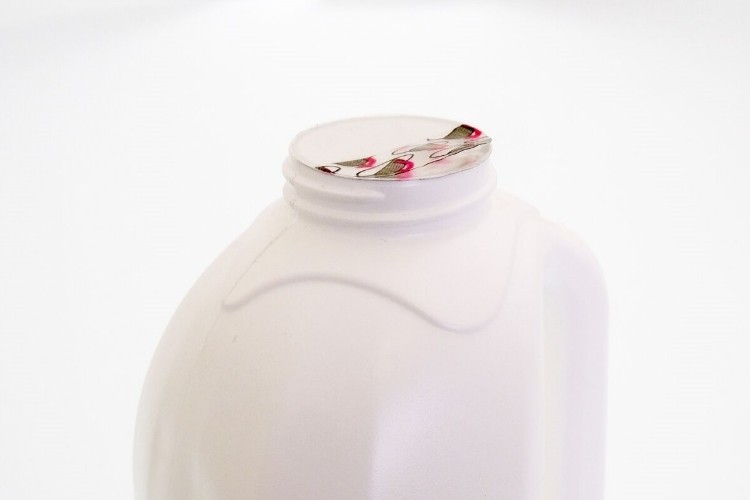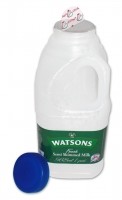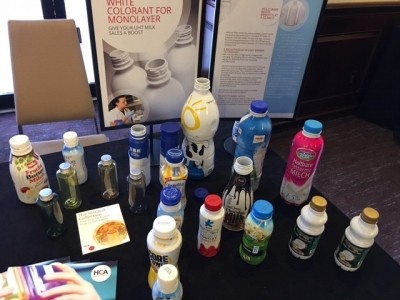Delivering tamper-evident dairy packaging

According to Darren Dodd, marketing and services director at UK container sealing technology company Selig, induction heat sealing meets those needs, as long as certain interacting factors in its application are correctly balanced.
Malicious tampering with food and beverage packaging is a rare occurrence, but one that people take very seriously. The latest innovations in sealing aim to keep the product securely contained and give clearly visible evidence of any attempt to tamper with it, Dodd told DairyReporter.
Strategies to date have included shrink-wrapped films, bands or wrappers, tamper-evident seals on boxes, and breakable screw caps. Often these create a problem for consumers who are elderly or have limited mobility, as they require considerable strength and dexterity to open.
“This has been solved for rigid containers, like plastic and glass bottles, through the development of induction heat sealing,” Dodd explained.
“It provides a non-contact method of applying a hermetic seal that prevents leaks, extends shelf life, secures the product, shows tamper evidence – and is easy to remove.”
Today’s ubiquitous HDPE screw-topped milk containers are a case in point, he noted. Many manufacturers are now using seals to protect what can be a very vulnerable foodstuff. Googling ‘milk tampering’ results in stories from around the world reaffirming the danger is real.
How induction heat sealing works
Induction heat sealing relies on the engineering of a complex laminated liner, which is positioned inside the container’s cap. Its key components include a heat seal, made from a material compatible with that of the container, and a layer of aluminum foil.
When exposed to the effect of an electromagnetic coil on the packaging line, heat is generated in the aluminum through the process of induction. As it is heated and then allowed to cool, the liner bonds to the rim or ‘land area’ of the container. If someone breaks this seal, it is very obvious to the consumer on removing the cap.
For containers that need to be resealed after opening, a two-piece design is used, Dodd added.
This has an extra liner, made from pulp board, which bonds to the inside of the cap. The two pieces are initially held together by a coating of wax or polyolefin, which melts away when heated.
Other layers may include foam to ensure even pressure while sealing, PET to form a contamination barrier, and a paper or PET easy-open feature with a pull tab.
Getting the balance right
Successful application of induction heat sealing depends on achieving the right balance of pressure, heat and time, and choosing the most appropriate liner design and materials, Dodd said.
The correct pressure needs to applied evenly around the entire rim of the container. If too low, there will be insufficient contact. If too high, it may strip the screw threads and make pressure uneven. Irregularities in the rim surface may also result in inconsistent pressure.
“The length of time spent under the induction coil is critical,” Dodd explained.
“It has to be sufficient to allow heating of the polymer sealing surface to the optimum temperature for melting and bonding with the container’s rim. That time will depend on variables including the conveyor line speed, container size, product temperature and type of liner.”
Allowing enough time for cooling is also important, as the bond will not reach full strength until it is cool. Any rough handling of the containers at this stage might displace the seal.
Different materials and combinations of layers will vary in their suitability for each particular packaging application. Then there is the question of whether to go for a one-piece or two-piece liner.
The choice of easy-open features includes half-moon lifting tabs and folded-down side tabs. In the latter case, problems can arise from deflection of the induction field by the vertical part of the aluminum layer. This results in less heat generation in that area, with the possibility of a weakness in the seal.
Ask for advice
“To the variables already mentioned, we should add induction equipment and power settings,” Dodd said.
“It is important to note that measurement of temperatures and temperature increases generated by induction at the seal interfaces is not practical. Decisions on how to produce the necessary amount of heat should be based on expert advice from suppliers, backed by trials.”
Trialing of induction systems with different liners, under production conditions, will establish which is the best set-up, and it will also determine what settings will achieve the most effective sealing at a given line speed.
Experienced providers of such equipment will be happy to help and should be contacted early in the planning process.
With their guidance, induction heat sealing becomes a highly reliable, fast and cost-effective approach to creating and maintaining a truly hermetic seal. This guarantees maximum product preservation and resistance to leakage.
More importantly, for peace of mind, it meets that growing need for visible confirmation that there has been no tampering with the contents of the package.
Founded in 1889, Selig, now a part of US company CC Industries, designs and manufactures closure liner products for food, beverage, pharmaceutical, healthcare, personal care and industrial applications. Selig is also a manufacturer of specialized laminated films for use in a variety of food, consumer and military applications.








